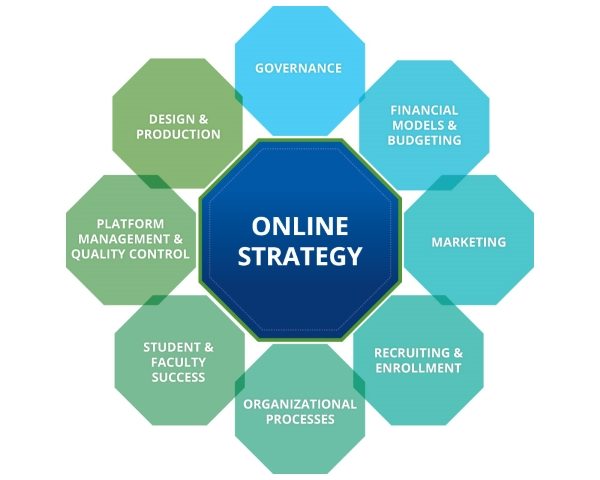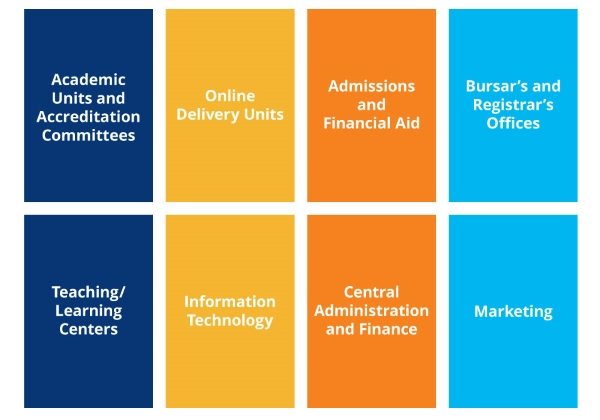
Sustaining Higher Ed is a monthly blog dedicated to helping college administrators and board trustees lead their organizations toward greater financial stability so they can stay on mission during challenging times.
Adding Online Education to Your Mix
As students seek more convenient, cost-effective learning opportunities, online enrollment is growing in higher education nationally. Large institutions, in particular, have not shied away from adding innovative online programs to their mix. For example, the Massachusetts Institute of Technology offers a MicroMasters program in statistics and data science, providing a bridge for aspiring data scientists and analysts to pursue a master’s degree at MIT or elsewhere.
Some forward-thinking institutions are strategically replacing their traditional programs with online education to increase their reach, improve learning outcomes, or utilize faculty living in other locations. One example is the University of Illinois, which ended its residential MBA in favor of a lower-cost iMBA program in which students participate in large, online classes, primarily through Coursera. This modality allows the Midwestern university to reach far beyond central Illinois. The university also offers potential degree students the opportunity to get started toward their degree by taking non-credit modules that can build toward a for-credit option.
Compared with large universities, smaller institutions in general have been slower to expand their online degree offerings. Part of the reason is that producing and delivering online programs is a highly complex process involving several phases, from market research to instructional design to marketing, payment, and financial distribution. Examples of the institutional building blocks needed, which are interrelated and connected throughout an institution, are illustrated in Figure 1.

At most institutions, the complexity of developing or bolstering these essential functions is heightened by the need to integrate responsibilities across departments and units. Units that could be involved are shown in Figure 2.

Not only does online learning require these units to function differently than in the past, but it also requires their leaders to change their processes—and sometimes their mindsets.
Despite the complexities, some smaller institutions have found a way to bring their distinctive programs online to expand their reach and build revenue. Rather than aiming to replicate a massive organization such as Purdue Global (formerly Kaplan University), these smaller institutions have carefully considered their market niche and determined where their programs fit best in the competitive landscape. Examples include:
- Simmons University’s online nursing programs, which include several degree options
- University of Dayton’s online master's degree in educational leadership, which offers a path to principal licensure
- Shenandoah University’s nontraditional doctor of pharmacy program
The online programs at Simmons and University of Dayton are run in partnership with 2U, an online program manager (OPM), while Shenandoah University manages its online pharmacy degree program internally.
So what’s the right approach: partnering with an OPM or going it alone? The answer is: it depends.
Determining which path to take
Institutions have good reasons to use OPMs because these companies bring considerable experience and resources in online learning that many colleges and universities lack. OPMs have especially strong skillsets in two areas: production and marketing. I know from my own experience that working with OPMs can offer valuable learning experiences, and the partnerships contribute needed resources. Besides that, working with experts from another organization can be fun.
Some drawbacks to working with OPMs could be that the missions of for-profit OPMs and not-for-profit higher ed institutions may not fully align. Also, structuring contracts with OPMs can be complicated, and administrators may want to seek outside expertise to review them. They should particularly scrutinize exit strategies. In addition, OPMs are facing increased political pressure.
Deciding if and how exactly to use an OPM is one of the most important financial and strategic decisions that administrators can make. The best approach to determine if partnering with an OPM is right for your institution is to conduct an independent, transparent analysis of your current and projected resources. This is the most objective way to understand the potential financial impact of using or not using an OPM. Although OPMs almost always provide their own pro formas, higher ed leaders have a fiduciary responsibility to conduct an objective analysis.
By using a third party to conduct a thorough financial assessment, leaders get a clear sense of what resources they have on hand to invest in online program development. They also gain a better understanding of when they might see a return on their investment, whether they use an OPM or build their programs internally.
A financial analysis also can help institutions currently using OPMs determine if they would be better served taking their online programs in-house, based upon what returns they can expect in either scenario.
Finding the right mix
As you consider entering or expanding your presence in nontraditional markets like online education, you’ll want to find a trusted partner who can help you quantify the viability of various strategies. Strategy and financial modeling go hand-in-hand, especially in these kinds of initiatives.
Whether or not you use an OPM, you will need to determine how long it would take to achieve a sustainable revenue stream from a new online certificate or degree program. This knowledge creates a significant step toward designing an academic product mix that will continue to attract students for years to come.
Beyond helping you determine the right product mix, these insights can guide you as you decide which internal and external capabilities you should develop to support your online strategy. Some institutions may be well positioned to take on all of the necessary functions (such as market research, production, marketing, and so on) internally. For others, using vendors to contribute some of these competencies may be the best path to take.
Like any kind of innovation, online education programs are a risk. But you can manage this risk appropriately and optimize your strategy for future financial stability. In the coming months, we’ll look at other new markets that can help grow your revenue and sustain your institution’s success.
If you have questions or comments, please email Larenda at LMielke@kaufmanhall.com.







